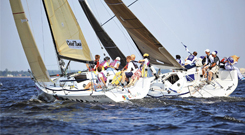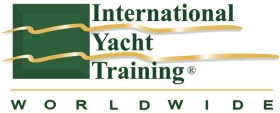Ask your question:
Useful materials
Traffic in transboundary water bodies

In Estonia the transboundary water bodies are the Narva river, the Narva Water Reservoir, the lake Peipsi, Pihkva and Lämmijärv.
Before you will go to the transboundary water body:
• be sure if you know where the state border (temporary border line) is running
Floating vessel has the right to approach the state border in the lake Peipsi up to 200 meters and in the Narva Water Reservoir, in the lake Pihkva and Lämmijärv up to 50 meters. Fishing and staying at the ice are allowed in the Narva Bay and the lake Peipsi up to 200 meters from the south-east state border.
Unfortunately, upon fishing people do not pay attention to the surrounding environment and sometimes at the ice they are driving through the border termini. Therefore, they break the border regime and cross the state border illegally.
The temporary border line signs must be followed if you go fishing at the ice. There is a discernible line in the water body designated by buoys or other marks. Each winter if the ice is stable in the water body, the patrol track-line and the border regime behind it, shall be established 50 meters from the temporary border line. The border line shall be indicated by bars or branches to which the yellow ribbon has been attached.
• Be aware of the valid regulations exercised in transboundary water body
Swimming in the river Narva and the Narva Water Reservoir is allowed only in the prescribed places during the day time. A swimmer can leave the bank only up to the appropriate sign. It is prohibited to stay in the river Narva and the Narva Water Reservoir at night time (half an hour past sunset and half an hour before sun rise).It is prohibited to stay in the dry riverbed of the river Narva from the dam of the water reservoir up to the railway bridge. People can attend the islands located in the river Narva and the Narva Water Reservoir after they have received the relevant permit issued by the East Prefecture.
• Check if the floating vessel shall meet the prescribed requirements
All the floating vessels used in transboundary water bodies or kept on the banks of those water bodies shall be entered in the relevant register and bear the relevant registration number.
• Check the technical conditions of floating vessel and navigation equipment
• Provide the requested departure and arrival notification to the nearest border guard station
• Check the weather forecast
• Wear life-jackets
It is obligatory to wear life-jackets if you go to transboundary water body. There is a difference between life-jacket and buoyancy jacket. The buoyancy jacket is not a rescue jacket. This jacket is designed for a short time stay in water with the precondition the person can quickly manage back to vessel or to the bank. It is impossible to stay with buoyancy jacket in the water for a long time.
The accurate life-jacket is designed with a collar. In case of accident, the life-jacket shall help the person in distress to keep him/ her above the water. In case of injuries, the life-jacket turns the body to the right position, so that the human`s head shall remain out of water.
The Estonian Maritime Administration has advised to exploit the life -jacket 15 / life-jacket 150 N with the carrying capacity of 15 kg because it is suiting very well to our climate condition. The other reason is that a person who cannot swim, is also able to use such kind of equipment. If a person has lost his/ her consciousness and is wearing heavy wet clothes full of water, the life-jacket shall keep the person above the water surface. The majority of this category of vests shall fulfil with gas automatically.
• Take along communication means
• Notify your relatives about departure on the water
• Take along the following documents:
- ID
- Water vessel driving licence and certificate of water vessel
- Documents proving your right for fishing
- Registration certificate of the means of transport and driving licence
Lock up your water vessel upon leaving transboundery water body!
The border guard has been provided with the right to ban going to ice. The relevant information can be found in the nearest border guard station. The aim of banning is to save the human lives. According to the statistics, the substantial decrease of accidents in transboundary water bodies have occurred after the border guard have been entitled with the right to impose the relevant ban.







